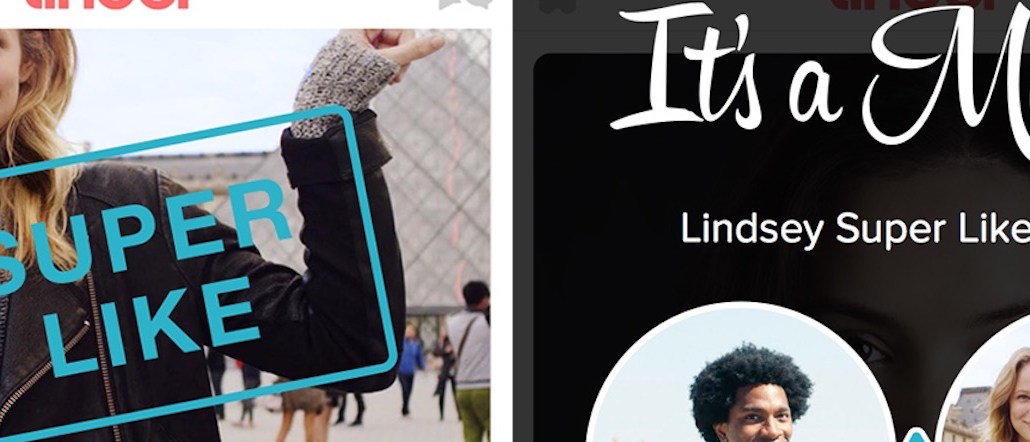Register by Jan 13 to save on passes and connect with marketers from Uber, Bose and more

Tinder is increasing the thirst factor with a new swipe called the “Super Like.”
The option, rolled out to all of the dating app’s users today, is essentially a right swipe on steroids.
Instead of swiping right to signal that they like the person, they swipe up activating the “Super Like” function, which then alerts the selected user with a badge indicating they’ve received an enhanced like.
The intent is to give the user an extra incentive to strike up a conversation since the suitor really, really, really, really likes them, or at least their profile pictures, as seen here:

Users get one free Super Like a day, which can’t be banked. Tinder Plus users, who pay $9.99 a month for extra features like unlimited right swipes, receive five Super Likes a day.
According to Tinder’s test of a small group of Australian users last month, the tool actually sparks longer conversations (70 percent longer, in fact) and matches were three times more likelier to occur.
On top of generating revenue from advertisements, Tinder CEO Sean Rad told TechCrunch that the new option is converting more people to subscribe to Tinder Plus because of the increased number of matches.
“We’ve seen Super Like have a meaningful impact on Tinder Plus conversion,” Rad said. “And that stems out of the value that people are getting from the Super Like.”
Images via Tinder.
More in Marketing

Inside the brand and agency scramble for first-party data in the AI era
Brands are moving faster to own first-party data as AI and privacy changes alter the digital advertising landscape.

Walmart Connect takes a play out of the Amazon playbook to make agentic AI the next battleground in retail media
The next retail media war is between Walmart Connect’s Sparky and Amazon’s Rufus, driven by agentic AI and first-party data.

What does media spend look like for 2026? It could be worse — and it might be
Forecasts for 2026 media spend range from 6.6% on the lower end to over 10% but the primary beneficiaries will be commerce, social and search.





